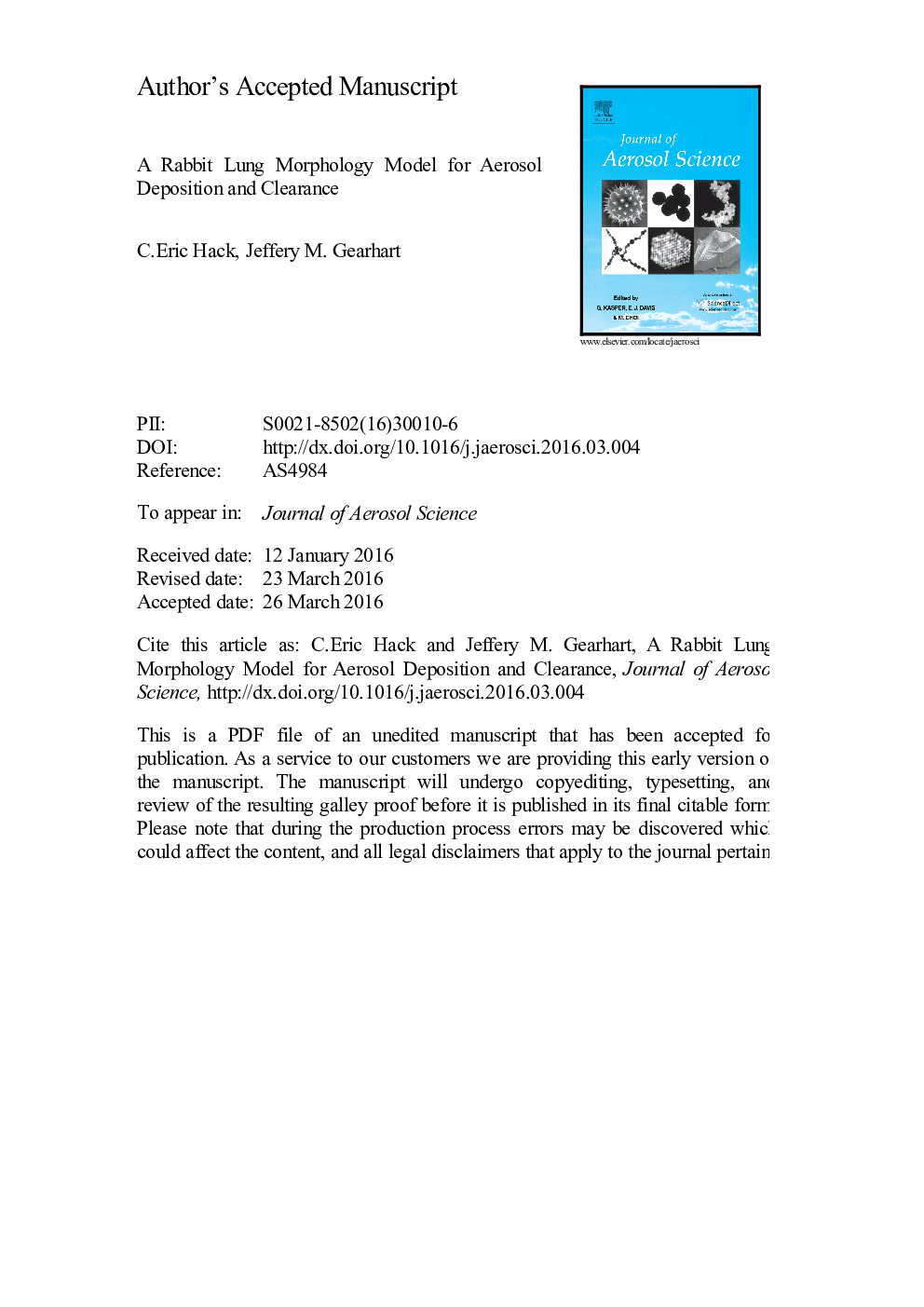| Article ID | Journal | Published Year | Pages | File Type |
|---|---|---|---|---|
| 6344348 | Journal of Aerosol Science | 2016 | 30 Pages |
Abstract
A rabbit lung morphology model was developed based on data available in the published literature. The airways of the lung were described with a typical path model. The lung airways are grouped by airway generation, which is the number of airway bifurcations leading from the trachea to the terminal airway. The airways in each generation are described by the average number, length, diameter, branching angle, and gravity angle. The geometry of the tracheobronchial (TB) region (generations 1-14) was defined by integrating the data primarily from Kliment (1974), Ramchandani, Bates, Shen, Suki, and Tepper (2001), and Schlesinger and McFadden (1981). Rodriguez, Bur, Favre, and Weibel (1987) data were used to define the pulmonary (PUL) region. The morphometry data were used in a typical path deposition and clearance model based on the work of Yeh and Schum (1980), Wojciak (1988), and Kimmel, Reboulet, and Carpenter (2001). Deposition via diffusion, sedimentation, and inertial impaction was modeled for TB and PUL deposition. Deposition in the head and larynx, (i.e., extrathoracic) was modeled with a function of the diameter, Stokes number, and diffusivity coefficient, and was fit to Raabe, Al-Bayati, Teague, and Rasolt (1988) data. A clearance model was constructed, based on mucosal and macrophage movement, and integrated with the deposition model. Predictions were in good agreement with the data. The model was used to explain apparent inconsistencies in a data set collected following inhalation exposure of rabbits to Bacillus anthracis spores.
Related Topics
Physical Sciences and Engineering
Earth and Planetary Sciences
Atmospheric Science
Authors
C. Eric Hack, Jeffery M. Gearhart,
